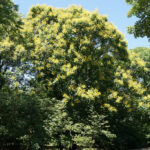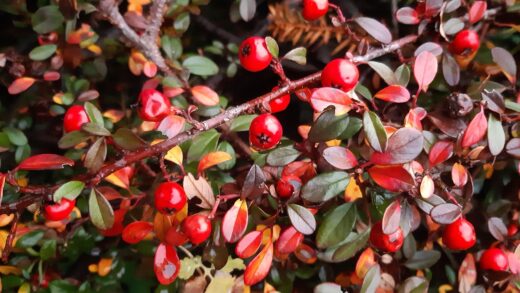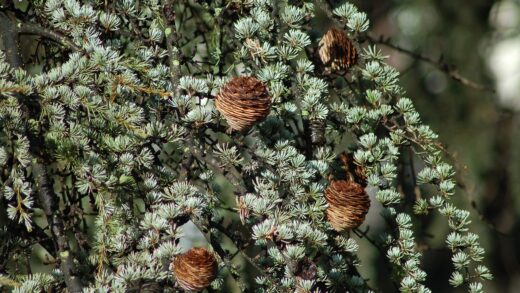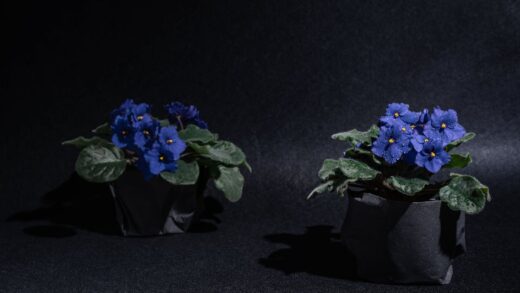To sustain its remarkable display of continuous blooms from early summer until the first frost, ‘The Fairy’ rose has specific nutrient requirements that must be met through a well-planned fertilization program. This prolific flowering demands a significant amount of energy, and the soil’s natural nutrient reserves can quickly become depleted. Fertilizing is the process of replenishing these essential elements, ensuring the plant has the building blocks it needs for vigorous foliage growth, strong root development, and, most importantly, the production of an abundance of flowers. A properly nourished rose is not only more beautiful but also healthier and more resilient, with a greater ability to withstand stress from pests, diseases, and adverse weather conditions.
The primary nutrients required by plants are nitrogen (N), phosphorus (P), and potassium (K), often referred to as macronutrients. Nitrogen is crucial for lush, green leaf and stem growth. Phosphorus plays a vital role in root development and the process of flower formation. Potassium contributes to the overall vigor of the plant, strengthening its systems and improving its resistance to disease and cold. A balanced fertilizer, which contains all three of these elements, is the cornerstone of a good rose nutrition program. The ratio of these nutrients, represented by the N-P-K numbers on the fertilizer packaging, indicates the percentage of each element by weight.
Beyond the big three macronutrients, roses also require a range of secondary nutrients, such as calcium, magnesium, and sulfur, as well as micronutrients like iron, manganese, and zinc, albeit in much smaller quantities. Healthy, organically rich soil is often able to supply many of these trace elements, but specific deficiencies can still occur. Recognizing the visual symptoms of nutrient deficiencies, such as yellowing leaves or stunted growth, can help you diagnose and correct issues before they severely impact the plant’s health.
The timing and type of fertilizer application are critical for maximizing its benefits and avoiding potential harm. A strategic approach that begins in early spring and continues through the growing season will provide a steady stream of nutrients when the plant needs them most. Both granular and liquid fertilizers have their place in a comprehensive feeding plan, as do organic amendments like compost and manure, which not only feed the plant but also improve the soil’s structure and health. The following sections will provide a detailed guide to developing an effective fertilization schedule, understanding different fertilizer types, recognizing deficiency symptoms, and appreciating the critical role of soil health in plant nutrition.
Developing a fertilization schedule
A consistent and well-timed fertilization schedule is essential for keeping ‘The Fairy’ rose healthy and productive throughout its long blooming season. The feeding regimen should begin in early spring as soon as new growth appears. This first application of the year provides the plant with a crucial boost of energy to support the initial development of leaves and stems. A balanced, granular slow-release rose fertilizer is an excellent choice for this initial feeding. The granular form breaks down gradually over several weeks, providing a steady supply of nutrients, and a balanced formula ensures the plant receives all the essential macronutrients in the correct proportions.
More articles on this topic
After the initial spring application, ‘The Fairy’ rose will benefit from regular feeding every four to six weeks until late summer. This continuous supply of nutrients is necessary to fuel its ongoing flower production. You can continue to use a granular fertilizer for these subsequent applications, or you may choose to switch to a liquid or water-soluble fertilizer. Liquid feeds are absorbed more quickly by the plant, providing a faster nutritional boost, which can be particularly useful if the plant appears to be lagging in performance. Whichever type you choose, always follow the package instructions carefully regarding application rates to avoid over-fertilizing, which can burn the plant’s roots.
One of the most critical aspects of a rose fertilization schedule is knowing when to stop. All feeding should cease approximately eight weeks before the first average frost date in your area. Applying fertilizer late in the season encourages the growth of new, tender shoots that will not have enough time to harden off before the arrival of cold weather. This soft, new growth is extremely vulnerable to frost damage, which can weaken the plant and create entry points for disease. Allowing the rose to slow its growth naturally and prepare for dormancy is a key part of ensuring its survival through the winter.
For gardeners in regions with very long growing seasons, the frequency of fertilization might be slightly increased. Conversely, in areas with shorter summers, fewer applications will be needed. It is also important to adjust your schedule based on the plant’s performance. If your rose is growing vigorously and blooming profusely, your current schedule is likely effective. However, if it shows signs of nutrient deficiency or poor flowering, you may need to adjust the frequency or type of fertilizer you are using. Observation is a gardener’s most valuable tool in tailoring a fertilization plan to the specific needs of their plants and environment.
Understanding different types of fertilizers
The market offers a wide array of fertilizers, and understanding the differences between them will help you make the best choice for your ‘The Fairy’ rose. Fertilizers can be broadly categorized into synthetic (inorganic) and organic types. Synthetic fertilizers are manufactured from chemical compounds and are designed to deliver specific, concentrated doses of nutrients. They are typically fast-acting and can provide a quick boost to plants. They are available in various forms, including granular, water-soluble powders, and concentrated liquids. While effective, they do little to improve the long-term health of the soil and can, if overused, contribute to a buildup of salts in the soil.
More articles on this topic
Organic fertilizers, on the other hand, are derived from natural sources such as plant matter, animal manures, and mineral deposits. Examples include compost, bone meal, blood meal, fish emulsion, and alfalfa meal. These fertilizers release their nutrients more slowly as they are broken down by microorganisms in the soil. This slow-release process provides a gentle, steady feeding for the plant and reduces the risk of root burn. A major advantage of organic fertilizers is that they also feed the soil itself, improving its structure, increasing its water-holding capacity, and fostering a healthy ecosystem of beneficial microbes.
Within these broad categories, you will find fertilizers formulated specifically for roses. These specialized products are designed to provide the ideal ratio of nutrients that roses need to thrive. They often contain a balanced N-P-K ratio and may be fortified with essential micronutrients like iron and magnesium, which are important for preventing common issues like chlorosis (yellowing leaves). Using a dedicated rose food is often a simple and effective way to ensure your ‘The Fairy’ rose is receiving a complete and appropriate diet.
In addition to pre-packaged fertilizers, you can create your own nutrient-rich soil amendments. A home composting system can turn kitchen scraps and garden waste into a valuable, nutrient-rich material that can be used to top-dress your roses each spring. This “black gold” is one of the best all-around soil conditioners and fertilizers available. Many experienced rose growers also create their own custom fertilizer blends, combining various organic ingredients like alfalfa meal (for growth hormones), Epsom salts (for magnesium), and bone meal (for phosphorus) to create a tailored nutritional program for their plants.
The importance of organic matter and soil health
While fertilizers provide concentrated nutrients, the long-term health and fertility of the soil are equally, if not more, important for the success of your ‘The Fairy’ rose. Healthy soil is a living ecosystem, teeming with billions of microorganisms that play a crucial role in breaking down organic matter and making nutrients available to plant roots. The single most important thing a gardener can do to foster this healthy soil environment is to regularly add organic matter. Materials like compost, aged manure, leaf mold, and shredded leaves are invaluable for building good soil structure.
Incorporating organic matter has numerous benefits. In heavy clay soils, it helps to separate the fine clay particles, creating better aeration and drainage. This prevents the soil from becoming compacted and waterlogged, which can starve roots of oxygen. In sandy soils, organic matter acts like a sponge, helping to retain moisture and nutrients that would otherwise quickly leach away. In all soil types, it provides a slow, steady release of a wide range of nutrients as it decomposes, supplementing your regular fertilization program. A top-dressing of one to two inches of compost applied around the base of the rose each spring is an excellent way to continuously improve your soil.
The pH of your soil also plays a critical role in nutrient availability. Soil pH is a measure of its acidity or alkalinity on a scale from 0 to 14. A pH of 7.0 is neutral, below 7.0 is acidic, and above 7.0 is alkaline. Roses, including ‘The Fairy’, prefer a slightly acidic soil with a pH between 6.0 and 6.5. In this range, the essential nutrients like nitrogen, phosphorus, and potassium are most readily available for the plant’s roots to absorb. If the soil is too acidic or too alkaline, certain nutrients can become “locked up” and unavailable to the plant, even if they are present in the soil.
It is a worthwhile investment to have your soil tested every few years to check its pH and nutrient levels. A soil test will provide a detailed report on your soil’s composition and will offer specific recommendations for any necessary amendments. If your soil is too alkaline, you can lower the pH by adding elemental sulfur or incorporating acidic organic matter like peat moss or pine needles. If your soil is too acidic, you can raise the pH by applying ground limestone. By maintaining optimal soil pH and continuously building its organic content, you create a foundation of health that allows your ‘The Fairy’ rose to get the maximum benefit from any fertilizer you apply.
Recognizing and treating nutrient deficiencies
Vigilant observation of your ‘The Fairy’ rose can help you identify the early signs of nutrient deficiencies, allowing you to take corrective action before the plant’s health is significantly impacted. The leaves of the rose are often the first place where symptoms appear. A general paleness or yellowing of the leaves, particularly the older, lower leaves, often indicates a nitrogen deficiency. Since nitrogen is mobile within the plant, the plant will move it from older leaves to support new growth, causing the older leaves to yellow first. A supplemental feeding with a nitrogen-rich fertilizer, such as fish emulsion or a balanced liquid feed, can usually correct this issue quickly.
One of the most common nutrient problems in roses is iron chlorosis, which is caused by a lack of available iron. The characteristic symptom is interveinal chlorosis, where the leaves turn yellow, but the veins remain green. This typically appears on the newest, youngest leaves first. Iron deficiency is often not caused by a lack of iron in the soil, but rather by a high soil pH that makes the iron insoluble and unavailable to the plant. The long-term solution is to lower the soil pH. For a quicker, short-term fix, you can apply a foliar spray containing chelated iron, which can be absorbed directly through the leaves.
A deficiency in magnesium can also cause yellowing leaves, but the pattern is often different from iron chlorosis. Magnesium deficiency typically causes yellowing between the veins of older leaves, sometimes with a distinctive V-shape or marbled pattern. A common and effective remedy for magnesium deficiency is to apply Epsom salts (magnesium sulfate). You can either dissolve about two tablespoons of Epsom salts in a gallon of water and use it to drench the soil around the base of the plant, or you can use it as a foliar spray. This should be done once or twice during the growing season if a deficiency is suspected.
While less common, deficiencies in other nutrients can also occur. A phosphorus deficiency might manifest as stunted growth and dull, sometimes purplish-tinged leaves, while a potassium deficiency can lead to weak stems and yellowing along the margins of older leaves. It is important to remember that these symptoms can sometimes be caused by other issues, such as poor drainage, soil compaction, or disease. If you suspect a nutrient deficiency, a comprehensive soil test is the most accurate way to diagnose the problem and determine the appropriate course of action, ensuring you are treating the root cause rather than just the symptoms.




















